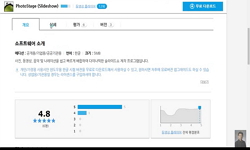베토벤은 고전주의에서 낭만주의 음악으로의 발전하는 전환기에 활동한 작곡가로 그 자신만의 표현력을 고전주의 음악의 형식 위에 자유로움, 대위법적 모방, 순환 기법과 함께 첨가하여 ...
http://chineseinput.net/에서 pinyin(병음)방식으로 중국어를 변환할 수 있습니다.
변환된 중국어를 복사하여 사용하시면 됩니다.
- 中文 을 입력하시려면 zhongwen을 입력하시고 space를누르시면됩니다.
- 北京 을 입력하시려면 beijing을 입력하시고 space를 누르시면 됩니다.
Beethoven piano sonata의 표현요소에 대한 연구 : Op.110의 템포와 다이나믹을 중심으로 = (A) Study on Expressive Elements of the piano sonata Op.110. by L.v.Beethoven focused on Tempo and Dynamics
한글로보기https://www.riss.kr/link?id=T9967309
- 저자
-
발행사항
서울 : 성신여자대학교 대학원, 2001
-
학위논문사항
학위논문(석사) -- 성신여자대학교 대학원 , 음악학과 기악전공 , 2001. 8
-
발행연도
2001
-
작성언어
한국어
-
주제어
템포 ; 피아노 소나타 ; 다이나믹 ; 표현요소 ; piano sonata
-
KDC
676.2 판사항(4)
-
발행국(도시)
서울
-
형태사항
ⅲ, 31p. : 삽도 ; 26cm.
-
일반주기명
참고문헌 수록
-
소장기관
-
0
상세조회 -
0
다운로드
부가정보
국문 초록 (Abstract)
본 논문은 베토벤의 피아노 소나타에 나타난 연주해석에 대해서 Op. 110을 중심으로 연구하였다. 특히 연주해석 중 중요한 템포와 다이나믹을 중심으로 비교 분석함으로 보다 정확한 연주해석을 내리는 데에 목적을 두었다. 템포에 정하는 전통적인 방법의 면에서 다른 작품과 비교 분석하여 베토벤이 피아노 소나타 Op. 110에서 요구한 가장 객관적인 템포에 대하여 연구하였다. 마찬가지로 다이나믹의 면에서도 전통적인 연주관습을 참고하여 베토벤이 이 작품에서 나타내려고 한 표현의도에 대하여 유사한 작품과 비교 연구하여 다음과 같은 결론을 얻었다.
첫째, Op. 110은 다른 말기 소나타와 함께 초기 소나타 보다 표현요소가 한층 더 주관적이며 세밀하여졌다. 템포와 다이나믹에 대한 지시도 전 보다 괄목할만하게 자세해져 Beethoven이 표현요소에 대한 의도를 살필 수 있으며, 이는 당시 개량을 거듭한 피아노의 구조개선으로 나타날 수 있었다.
둘째, Op.110의 제 1악장은 넓은 음폭, 다양한 표현, 특히 비교적 느린 음악에서 요구되는 cantabile의 표출 요구하는 음악내용으로 짜여져 있다. 따라서 비록 템포가 moderato cantabile molto espressivo로 지시되었지만, 리듬의 분할과 잦은 당김음 패시지(syncopated passge)가 사용된 기보법은 cantabile와 molto espressivo가 드러날 수 있도록 moderato 보다는 느린 템포와 기본적으로 legatissimo로 연주하는 것을 요구한다. 알레그로 몰토가 제시된 제 2악장은 레가토와 스타카토의 대비와 p와 f una corda와 tutte le corde의 대조가 요구되어 아주 빠른 템포 안에서도 이 모든 표현이 드러날 수 있어야한다. 제 3악장은 레치타티브와 아리오소 그리고 대 푸가를 사용한 복합형식으로 전이와 넓은 음폭, 빠르기의 잦은 변화, 템포디 루바토(tempo di rubato)를 연상하는 당김음적 패씨지의 잦은 사용으로 리듬과 빠르기의 유연성이 있는 성악적인 연주가 요구된다. 두번째 아리오조의 변주적 요소는 감상적이고 섬세하며 즉흥성이 돋보이며 베토벤만의 독특한 표현요소가 드러날 수 있도록 연주해야 한다. 마지막으로, 베토벤의 표현의도와 기법은 피아노 음악 작곡가로서 당대의 어느 작곡가 보다 탁월하였으며 당시 피아노의 구조적인 장점을 최대한 대로 드러낼 수 있는 작품을 산출하여 당대는 물론 후대에도 큰 영향을 미쳤다.
베토벤은 고전주의에서 낭만주의 음악으로의 발전하는 전환기에 활동한 작곡가로 그 자신만의 표현력을 고전주의 음악의 형식 위에 자유로움, 대위법적 모방, 순환 기법과 함께 첨가하여 독특한 양식을 창출해냈다. 그는 생애 전반에 걸쳐 피아노 소나타를 작곡하였는데, 그의 피아노 음악에 도입된 표현양식은 당시 발전을 거듭한 피아노 구조의 개선과 함께 이루어졌다. 이는 후반기에 작곡된 베토벤의 피아노 소나타의 대부분이 비교적 넓은 음역, 섬세한 다이나믹의 표현을 구현할 수 있었던 피아노의 구조개선으로 가능할 수 있었던 것이었다.
본 논문은 베토벤의 피아노 소나타에 나타난 연주해석에 대해서 Op. 110을 중심으로 연구하였다. 특히 연주해석 중 중요한 템포와 다이나믹을 중심으로 비교 분석함으로 보다 정확한 연주해석을 내리는 데에 목적을 두었다. 템포에 정하는 전통적인 방법의 면에서 다른 작품과 비교 분석하여 베토벤이 피아노 소나타 Op. 110에서 요구한 가장 객관적인 템포에 대하여 연구하였다. 마찬가지로 다이나믹의 면에서도 전통적인 연주관습을 참고하여 베토벤이 이 작품에서 나타내려고 한 표현의도에 대하여 유사한 작품과 비교 연구하여 다음과 같은 결론을 얻었다.
첫째, Op. 110은 다른 말기 소나타와 함께 초기 소나타 보다 표현요소가 한층 더 주관적이며 세밀하여졌다. 템포와 다이나믹에 대한 지시도 전 보다 괄목할만하게 자세해져 Beethoven이 표현요소에 대한 의도를 살필 수 있으며, 이는 당시 개량을 거듭한 피아노의 구조개선으로 나타날 수 있었다.
둘째, Op.110의 제 1악장은 넓은 음폭, 다양한 표현, 특히 비교적 느린 음악에서 요구되는 cantabile의 표출 요구하는 음악내용으로 짜여져 있다. 따라서 비록 템포가 moderato cantabile molto espressivo로 지시되었지만, 리듬의 분할과 잦은 당김음 패시지(syncopated passge)가 사용된 기보법은 cantabile와 molto espressivo가 드러날 수 있도록 moderato 보다는 느린 템포와 기본적으로 legatissimo로 연주하는 것을 요구한다. 알레그로 몰토가 제시된 제 2악장은 레가토와 스타카토의 대비와 p와 f una corda와 tutte le corde의 대조가 요구되어 아주 빠른 템포 안에서도 이 모든 표현이 드러날 수 있어야한다. 제 3악장은 레치타티브와 아리오소 그리고 대 푸가를 사용한 복합형식으로 전이와 넓은 음폭, 빠르기의 잦은 변화, 템포디 루바토(tempo di rubato)를 연상하는 당김음적 패씨지의 잦은 사용으로 리듬과 빠르기의 유연성이 있는 성악적인 연주가 요구된다. 두번째 아리오조의 변주적 요소는 감상적이고 섬세하며 즉흥성이 돋보이며 베토벤만의 독특한 표현요소가 드러날 수 있도록 연주해야 한다. 마지막으로, 베토벤의 표현의도와 기법은 피아노 음악 작곡가로서 당대의 어느 작곡가 보다 탁월하였으며 당시 피아노의 구조적인 장점을 최대한 대로 드러낼 수 있는 작품을 산출하여 당대는 물론 후대에도 큰 영향을 미쳤다.
다국어 초록 (Multilingual Abstract)
He composed Piano sonatas through all of his life along with the development and improvement of structure of the Piano of the time. The wide range of pitch and various degrees of dynamics expressed on his Piano sonatas of the later period could only be possible with the improvement of Piano mechanism of the time.
This dissertation is a study intended to establish an ideal interpretation of the Piano sonatas, Op. 110 by Beethoven. Focused on such as tempo and dynamics, the important elements of musical expression were discussed with a purpose of providing appropriate interpretation through comparative study and analysis. The conventional performing practice deciding tempo was applied in this research and also comparative study was introduced to set out the most appropriate tempo for the Op. 110. Under the same principle, the conventional performing practice in relation to expressing ways of dynamics was also referred with a view to presenting Beethoven's intention on expression. The Beethoven s Piano sonatas of last period contain very personal and detailed expression much more than the sonatas of the earlier periods. Clearer and more precise indications for tempo and dynamics were appeared than ever in his later works, while the conventional practice depicting the two elements of musical expression were still preserved.
To conclude, the first movement of Op. 110 should be set to a rather little slower tempo than moderato which was originally indicated in the top of composition by Beethoven, as so many rhymic diminution, syncopated passages and various moods are intermingled within the wide range and characters of melody. And especially because Beethoven normally employed the term, 'cantabile ' for slower works. Playing in legatissimo is also required to depict 'cantabile' and ' molto expreesione'. For the second movement that requires contrast between legato and staccato, p and f as well as una corda and tutte le corde should be performed within the faster tempo in which the contrasts could be revealed. Lastly, the third movement where recitative, two ariosos and two grand fuga were intermingled, shows complexity in terms of structure. These are the typical structural and compositional styles that Beethoven employs in his later works. In this final movement, flexible and singing like playing is required to reveal a motions expressed in each section by applying detailed and various degrees of dynamics and tempo.
Ludwig van Beethoven(1770-1827) who lived during the turn of musical periods, the classic and the romantic period, created his personal style of composition and expression by adding freedom of form, contrapuntal and cyclic movement in terms of composi...
Ludwig van Beethoven(1770-1827) who lived during the turn of musical periods, the classic and the romantic period, created his personal style of composition and expression by adding freedom of form, contrapuntal and cyclic movement in terms of compositional technique to the classical idioms.
He composed Piano sonatas through all of his life along with the development and improvement of structure of the Piano of the time. The wide range of pitch and various degrees of dynamics expressed on his Piano sonatas of the later period could only be possible with the improvement of Piano mechanism of the time.
This dissertation is a study intended to establish an ideal interpretation of the Piano sonatas, Op. 110 by Beethoven. Focused on such as tempo and dynamics, the important elements of musical expression were discussed with a purpose of providing appropriate interpretation through comparative study and analysis. The conventional performing practice deciding tempo was applied in this research and also comparative study was introduced to set out the most appropriate tempo for the Op. 110. Under the same principle, the conventional performing practice in relation to expressing ways of dynamics was also referred with a view to presenting Beethoven's intention on expression. The Beethoven s Piano sonatas of last period contain very personal and detailed expression much more than the sonatas of the earlier periods. Clearer and more precise indications for tempo and dynamics were appeared than ever in his later works, while the conventional practice depicting the two elements of musical expression were still preserved.
To conclude, the first movement of Op. 110 should be set to a rather little slower tempo than moderato which was originally indicated in the top of composition by Beethoven, as so many rhymic diminution, syncopated passages and various moods are intermingled within the wide range and characters of melody. And especially because Beethoven normally employed the term, 'cantabile ' for slower works. Playing in legatissimo is also required to depict 'cantabile' and ' molto expreesione'. For the second movement that requires contrast between legato and staccato, p and f as well as una corda and tutte le corde should be performed within the faster tempo in which the contrasts could be revealed. Lastly, the third movement where recitative, two ariosos and two grand fuga were intermingled, shows complexity in terms of structure. These are the typical structural and compositional styles that Beethoven employs in his later works. In this final movement, flexible and singing like playing is required to reveal a motions expressed in each section by applying detailed and various degrees of dynamics and tempo.
목차 (Table of Contents)
- 논문개요 = ⅰ
- 목차 = ⅲ
- Ⅰ. 서론 = 1
- Ⅱ. 피아노의 발전과 베토벤의 피아노 = 2
- Ⅲ. 베토벤의 피아노 음악의 다이나믹 = 7
- 논문개요 = ⅰ
- 목차 = ⅲ
- Ⅰ. 서론 = 1
- Ⅱ. 피아노의 발전과 베토벤의 피아노 = 2
- Ⅲ. 베토벤의 피아노 음악의 다이나믹 = 7
- Ⅳ. 베토벤 피아노 음악의 템포 = 10
- Ⅴ. 베토벤 피아노 소나타 op. 110의 연주해석 = 13
- Ⅵ. 결론 = 30
- 참고문헌 = 32
- ABSTRACT = 34











